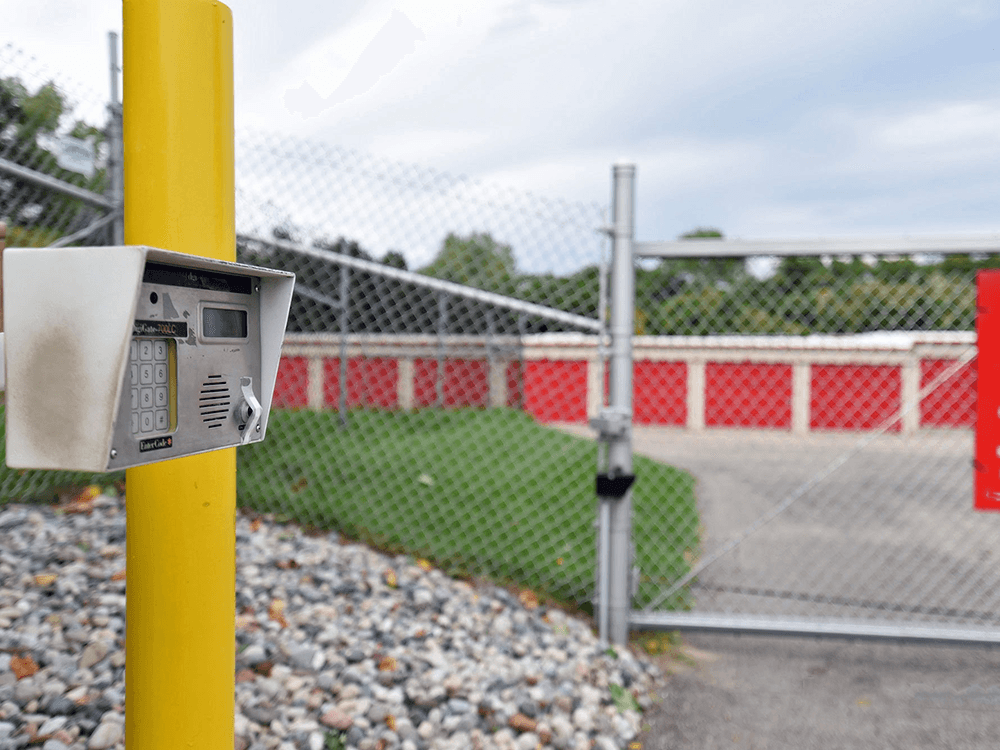
 Packing Tips
Packing TipsSecurity Measures to Look for in a Storage Facility
Top 5 Security Features to Look for in a Storage Facility
When selecting a self-storage facility, the decision should go far beyond just pricing and square footage. While affordability and space are important, the true value of a storage center lies in how well it protects your belongings. Whether you're storing personal keepsakes, business inventory, or seasonal gear, ensuring those items remain safe and intact should be a top concern.
In fact, we’d argue that security should be your number one priority. You’re not just paying to store your items—you’re trusting a facility to keep them secure. That means not all storage centers are created equal. Some offer only the basics, while others invest in state-of-the-art security measures.
Below are the five most critical security features you should look for in any facility you consider. Ideally, your chosen location will include all five. But even if not, this guide will help you identify what matters most—and give you confidence when making your final decision.
1. Perimeter Fencing: Your First Line of Defense
The first thing you should notice when approaching a storage facility is its perimeter fencing. This feature may seem simple, but it's one of the most effective and essential security tools available.
A strong fence acts as a physical and psychological barrier. It prevents unauthorized individuals from easily walking onto the property and sends a clear message that security is taken seriously. In contrast, a facility without fencing—or with broken, low, or poorly maintained fences—is essentially an open invitation to trespassers.
Quality fences are often made of chain-link or steel and may be topped with barbed or razor wire to prevent climbing. Some facilities go a step further with privacy slats to block visibility from the outside. Not only do fences define the boundaries of the property, but they also serve as the first visual deterrent to would-be intruders.
When combined with other security systems, fencing greatly reduces the likelihood of theft or vandalism. So, if a facility doesn’t even bother to install basic fencing, consider that a red flag and look elsewhere.
2. Controlled Gate Access: Regulating Entry and Exit
A secure fence is only as effective as its entry point—which brings us to controlled gate access. Gated entry systems are a must-have for any self-storage property that values safety.
Look for facilities that offer keypad, keycard, or app-based access at all entry gates. These systems allow only current tenants and authorized personnel onto the property. Some even offer personalized access codes, so the facility can log exactly who enters and exits, and when. This audit trail can be invaluable in the event of suspicious activity or an incident.
Gates also help streamline traffic and create a single point of entry, which is easier to monitor than multiple unsecured access points. And from a visual standpoint, tall, locked gates discourage casual snooping or drive-through theft attempts.
Modern systems may even integrate with tenant management platforms, enabling renters to open gates from their phones and receive real-time notifications about activity. Ultimately, gated access isn’t just about limiting who gets in—it’s about tracking and controlling all movement in and out of the facility.
3. Bright, Strategic Lighting: Make Criminals Think Twice
Lighting may seem like a minor detail, but it plays a powerful role in deterring crime. Well-lit properties discourage theft, vandalism, and loitering by removing the shadows and dark corners where suspicious activity often hides.
A good storage facility should have exterior lighting that covers all entry points, drive aisles, and access corridors, not just the main office or sign. Lighting should be bright enough to illuminate the entire area but not so harsh that it creates glare or discomfort for tenants.
The most effective systems are motion-activated. These lights not only save energy but also act as a surprise alert to anyone moving on the property after dark. The sudden burst of light can startle would-be thieves and signal to others nearby that something is happening.
Beyond safety, good lighting also enhances the customer experience. It makes evening or early-morning visits more comfortable, reduces the risk of accidents, and creates a general sense of professionalism. A bright, well-maintained environment tells customers the facility is managed with care.
4. Video Surveillance: Watchful Eyes 24/7
While fencing, gates, and lighting are designed to prevent crime, surveillance systems help detect and respond to it. Video monitoring is one of the most effective tools for capturing criminal activity—and preventing it altogether.
At a minimum, look for facilities with cameras at the front gate, main office, and drive aisles. The best setups offer full-coverage, 24/7 high-definition recording, with cameras placed at every key point on the property. Indoor units and climate-controlled areas should also be monitored, if accessible after hours.
Many facilities now offer cloud-based video storage, making it easier to retrieve footage if needed. In the event of a break-in, accident, or dispute, clear camera footage can support police reports, insurance claims, and legal cases.
Even more importantly, visible cameras act as a strong psychological deterrent. Most thieves won’t take the risk of being caught on camera and will move on to easier targets. Make sure the facility advertises its surveillance capabilities—it should be a selling point, not a secret.
5. On-Site Management: A Human Touch for Maximum Security
Technology can do a lot—but there’s still no substitute for a human presence. That’s why a facility with a full-time, on-site manager offers a serious advantage.
On-site managers are responsible for overseeing day-to-day operations and enforcing facility rules. They monitor who comes and goes, inspect units, respond to emergencies, and provide a visible authority figure that deters misconduct.
Their presence adds a layer of security that systems alone can’t match. While cameras record, managers observe in real time, notice patterns, and act quickly if something seems off. Many facilities also train their managers in conflict resolution, first aid, and emergency response, giving you even more confidence in their ability to protect your items.
Though some customers worry that on-site management may limit 24/7 access, the added security often outweighs that inconvenience. When a real person is present and engaged, you know someone is looking out for your storage unit—even when you’re not.
Bonus Tip: Ask the Right Questions Before You Rent
Now that you know the five key features, don’t be afraid to ask direct questions before committing to a rental. Here are a few suggestions:
- Is access to the property monitored and recorded?
- What happens if there’s a break-in or attempted theft?
- How often is the video footage reviewed?
- Who maintains the fencing and lighting?
- Are there staff members or security guards on-site during business hours?
A reputable storage facility will gladly answer these questions and walk you through their security features. If they seem vague, defensive, or unable to provide clear information, consider it a warning sign.
Final Thoughts: Choose Security with Confidence
At the end of the day, storing your belongings is about trust. You’re trusting that your items will be as safe in the storage unit as they are in your own home. That’s why prioritizing security features is non-negotiable.
To recap, the best storage facilities offer:
- Strong perimeter fencing
- Secure, controlled gate access
- Bright, motion-sensor lighting
- Comprehensive video surveillance
- Knowledgeable, on-site management
When these features work together, they create a multi-layered defense system that keeps unwanted visitors out and your valuables protected. Don’t settle for a facility that skimps on safety—invest in one that earns your trust from the first visit.



